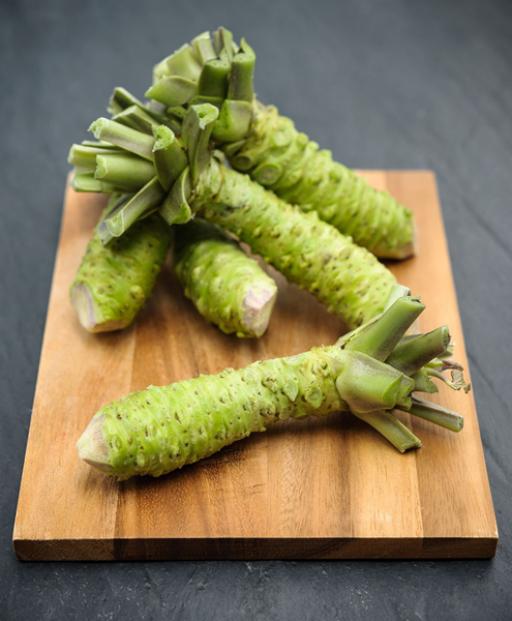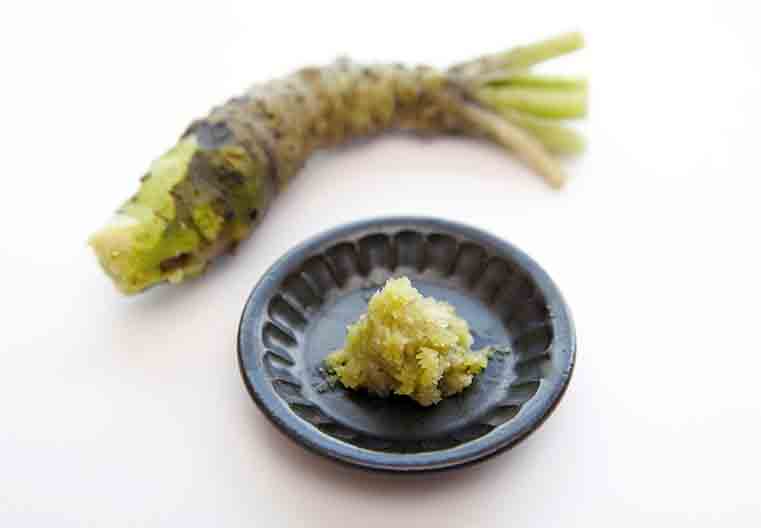Wasabi, a staple in Japanese cuisine, is often mistaken as merely a spicy condiment to accompany sushi. However, its true origins reveal a fascinating tale of cultivation and authenticity that dates back centuries. Cultivated primarily in the streams of Japan’s mountainous regions, real wasabi, or Wasabia japonica, is notoriously challenging to grow. The plant thrives in specific climates and conditions, requiring constant running water and a delicate balance of light and temperature. This meticulous cultivation process leads to a product that is not only flavorful but also rich in nutrients. As a result, true wasabi is a rarity outside Japan, often commanding high prices on the market. Thus, it begs the question: how does one ensure the authenticity of the wasabi served in restaurants around the world?
The unfortunate reality is that most consumers are unwittingly indulging in an imitation product, usually a mixture of horseradish, mustard, and green food coloring. This alternative, while similar in taste and heat, lacks the complex flavor profile and nuanced experience of authentic wasabi. The reasons for the widespread use of imitation are numerous, including cost efficiency and accessibility. To understand whether your wasabi is genuine, consider the following factors:
- Color and texture: Authentic wasabi has a lighter green hue and a smoother texture compared to its horseradish counterpart.
- Flavor: Real wasabi delivers a gradual heat that dissipates quickly without overwhelming the palate.
- Packaging and labeling: Look for products labeled as “fresh wasabi” or “wasabi rhizome” for a better chance at authenticity.
As the global food market continues to evolve, the challenge of distinguishing real wasabi from its impostors becomes increasingly relevant, urging both consumers and chefs alike to explore the origins and authenticity of this revered ingredient.
The Green Imposter: Understanding the Differences Between Wasabi and Horseradish
When it comes to sushi, the vibrant green paste served alongside your rolls is often assumed to be genuine wasabi. However, the reality is that most of what passes for wasabi in restaurants and grocery stores is actually a mixture of horseradish, mustard, and food coloring. Genuine wasabi, derived from the root of the Wasabia japonica plant, is notoriously difficult to cultivate and is thus rarely seen outside specialty markets or fine dining establishments. This rarity has enabled horseradish to masquerade as the authentic product, as its cheaper production can fulfill the high demand for that signature spicy kick.
The distinctions between these two condiments extend beyond mere taste. While true wasabi offers a fresh, nuanced flavor profile with a more complex, less pungent heat, horseradish tends to deliver a sharper, more biting sensation. Wasabi’s flavor also dissipates quickly, making it ideal as a condiment meant to enhance rather than overpower the palate. In contrast, horseradish retains its fiery essence longer, which can overshadow the delicate nuances of sushi. Ultimately, understanding these differences allows consumers to make more informed choices about what they are consuming, and perhaps even a more authentic culinary experience when searching for the real deal.
Taste Test: How to Identify Genuine Wasabi in Your Sushi
When it comes to enjoying sushi, the vibrant green paste served alongside can significantly elevate the dining experience. However, determining whether you’re indulging in genuine wasabi or its cheaper counterpart—green horseradish—can be tricky. Authentic wasabi, derived from the root of the Wasabia japonica plant, boasts a complex flavor profile that reveals itself gradually, offering a sweetness followed by a clean heat. In contrast, horseradish, often dyed green for aesthetics, presents a sharper, more immediate spiciness that quickly overwhelms the palate.
To ensure you’re savoring genuine wasabi, pay close attention to these key indicators:
- Flavor Complexity: Real wasabi has a nuanced taste that is earthy and mildly sweet, gradually unfolding its heat.
- Texture: Authentic wasabi has a smoother, creamier texture when freshly grated, lacking the gritty consistency often associated with horseradish.
- Color: Genuine wasabi possesses a natural green hue, which tends to be lighter than the artificial variants.
- Price Tag: If your sushi comes with wasabi that’s suspiciously cheap, chances are it’s not the real deal. Authentic wasabi is a premium product.

Navigating the Market: Recommendations for Finding Real Wasabi Products
When searching for authentic wasabi, consumers must navigate a maze of misleading labels and green-hued impostors. The demand for real wasabi has increased, leading many retailers to capitalize on this trend by offering products that are, in essence, merely rebranded horseradish. To ensure you’re purchasing genuine wasabi, pay close attention to the ingredient list. Authentic wasabi will typically be labeled as “Wasabia japonica” or simply “wasabi”, whereas you may find products labeled as “wasabi paste” or “wasabi powder” often contain horseradish as their primary ingredient. Look for products that contain no artificial colors or flavorings, and check for certifications or seals of authenticity when available.
Another strategy is to source wasabi from reputable specialty stores or online retailers known for their commitment to quality ingredients. When in doubt, consider the price point, as genuine wasabi is relatively more expensive than its imitation counterparts due to the lengthy cultivation process. Connecting with local sushi chefs or restaurants that specialize in Japanese cuisine can also provide insights into reliable sources of real wasabi. These culinary professionals often have direct relationships with suppliers and can direct consumers to trusted brands, ensuring that you’re not only elevating your meal experience but also supporting sustainable agricultural practices.